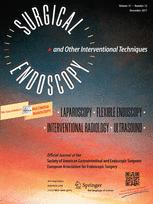Bell RC, Cadiere GB
Surg Endosc. 2011 Jul;25(7):2387-99.
BACKGROUND:
Gastroesophageal reflux disease (GERD) results primarily from the loss of an effective antireflux barrier, which forms a mechanical barrier against the retrograde movement of gastric content. Restoration of the incompetent antireflux barrier is possible by longitudinal and rotational advancement of the gastric fundus about the lower esophagus, creating an esophagogastric fundoplication. This article describes the technique of performing a rotational and longitudinal esophagogastric fundoplication, performed transorally using EsophyX.
METHODS:
The transoral incisionless fundoplication (TIF) technique enables the creation of a full-thickness esophagogastric fundoplication with fixation extending longitudinally up to 3.5 cm above the Z-line and rotationally more than 270 degrees around the esophagus. A key element of the technique involves rotating the fundus around the esophagus with a tissue mold during gastric desufflation. Anatomic considerations and use of the device’s tissue invaginator to push the esophagus caudally are important to ensure safe positioning of the plications below the diaphragm. The steps of the technique are described in detail, and suggestions are given about patient selection and care, as well as prevention and management of complications.
Link to PDF file on PMC: Bell RC, Cadiere GB; Surg Endosc. 2011 Jul;25(7):2387-99.


